Marcia Thornton Jones's Blog, page 20
May 3, 2024
Just a Writer Reading for Beauty
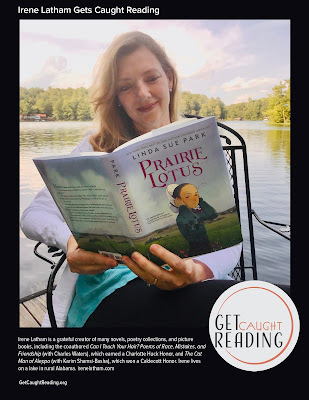 Irene Latham reading
Irene Latham readingThis month we're talking about Beauty—which I love, because "Beauty" is my 2024 One Little Word.
One way beauty finds its way into my life is through the books I read.
For as long as I can remember I have recorded beautiful words...for joy, education, inspiration!
Once upon a time I'd handwrite passages into a journal. These days I create a digital file for any book I want to highlight or dog-ear.
Some of these files are pages long.
Others contain just a single quote or passage.
Today I'd like to share with you a small sampling taken from my alphabetized-by-book-title "MG/YA" sub-folder in my much larger "Books I've Read" folder. Enjoy!
 She had never seen waves before, Her eye rested upon them, fascinated; how much time passed, or how any waves she tracked, she had no idea. Farther out to sea, they weren’t waves at all, only mounds, like furrows in a field. Then, somehow, each mound rose to an edge, thin as the blade of knife. The knife-edge tilted, the wave coiled, and there wa a moment when it seemed as if it must break – and yet it did not. Then a line of brightness, crooked and notched like paper catching fire, rippled across the top edge of the wave. The water crashed and erupted, droplets spurting straight up and leapfrogging off the surface of the foam.
She had never seen waves before, Her eye rested upon them, fascinated; how much time passed, or how any waves she tracked, she had no idea. Farther out to sea, they weren’t waves at all, only mounds, like furrows in a field. Then, somehow, each mound rose to an edge, thin as the blade of knife. The knife-edge tilted, the wave coiled, and there wa a moment when it seemed as if it must break – and yet it did not. Then a line of brightness, crooked and notched like paper catching fire, rippled across the top edge of the wave. The water crashed and erupted, droplets spurting straight up and leapfrogging off the surface of the foam.- Laura Amy Schlitz, A DROWNED MAIDEN'S HAIR

I wish I had a hundred years,” she said, very quietly. “A hundred years I could give to you.”
- Patrick Ness, A MONSTER CALLS
 'It’s very painful ins’t it?'
'It’s very painful ins’t it?'I nodded. George was nodding, too. We were like a field of tulips in a breeze.
‘And hard to let go,’ she went on. ‘There’s no getting around that. But you must remember, even if you never understand what happened, what went wrong, that you will have friendship again, good friendship. Because you are a person capable of friendship. And sooner or later there will be someone who deserves you.’
- Lynne Rae Perkins, ALL ALONE IN THE UNIVERSE

It was beautiful. The kind of beautiful that makes you go quiet inside.
- Crystal Chan, BIRD
May 2, 2024
The Beauty of Middle Grade Fiction
The Beauty of Middle Grade Fiction
Over the past week or so, I’ve interviewed several authorsof middle grade novels on my blog, Book Q&As with Deborah Kalb, and Ithought I’d share some of their thoughts.

AliciaD. Williams is the author of the new novel in verse Mid-Air, which looks at aboy in the aftermath of his friend’s death. “Isaiah came out ofmy want to question why boys are not encouraged to defy gender norms. How boysare held to a standard of toughness and, most times, toxic masculinity. And howthey have to hide parts of themselves to fit in the narrowly defined “boy” category,”she said. “And Isaiah was modeled after the sweet, sensitive boys I had thepleasure of teaching in my classrooms.”
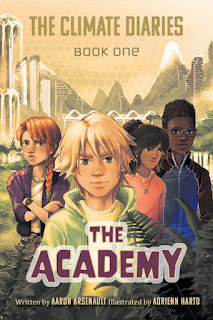
Aaron Arsenault’s new novel, The Academy, focuses on climatechange. “I was looking for something to read to my own kids aboutclimate change that was inspiring, and I couldn’t find anything!” he said. “Whatlittle there was in the genre seemed to be so negative and dystopian. I wantedto find something for them with a hopeful voice. So, I set out to dosomething about it and wrote my own!”

HeatherMurphy Capps’s novel Indigo & Ida looks at the journalist and activist IdaB. Wells. Capps said, “Ida’s story is incredibly important not just because ofher legacy of investigative reporting and social activism but also because…theissues she was writing about in the late 19th century and early 20th centuryare so sadly similar to those that play out every day our world today.”
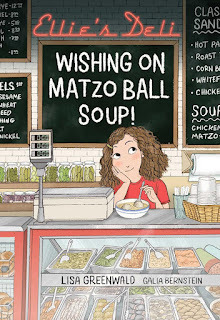
Lisa Greenwald’s new novel, Ellie’s Deli: Wishing on MatzoBall Soup!, features a girl trying to save her family’s deli. I asked howGreenwald came up with the idea for the novel, and she said, “A love of deliand grandparents inspired Ellie’s Deli. I was super close to mygrandparents growing up and I wanted to write about a character who had thatrelationship as well. Add in a deli setting and voila - it all came together!”
It'sall part of the beauty of middle grade fiction.
--DeborahKalb
@font-face {font-family:"Cambria Math"; panose-1:2 4 5 3 5 4 6 3 2 4; mso-font-charset:0; mso-generic-font-family:roman; mso-font-pitch:variable; mso-font-signature:-536870145 1107305727 0 0 415 0;}p.MsoNormal, li.MsoNormal, div.MsoNormal {mso-style-unhide:no; mso-style-qformat:yes; mso-style-parent:""; margin:0in; mso-pagination:widow-orphan; font-size:16.0pt; font-family:"Times New Roman",serif; mso-fareast-font-family:Arial; mso-fareast-theme-font:minor-latin; mso-font-kerning:1.0pt; mso-ligatures:standardcontextual;}.MsoChpDefault {mso-style-type:export-only; mso-default-props:yes; font-size:16.0pt; mso-ansi-font-size:16.0pt; mso-bidi-font-size:16.0pt; mso-fareast-font-family:Arial; mso-fareast-theme-font:minor-latin;}div.WordSection1 {page:WordSection1;}
April 30, 2024
Some Seriously Thick Roots (Holly Schindler)
I'm a 6th generation Missourian. My multi-great grandparents were some of the first settlers in the area. Not too far from my home in Springfield, there's a church that was established by the same settlers. They're all buried in the cemetery out back. The slippery elm trees curl all around it. My cousin still works the neighboring farm. His cows are sometimes along the fence at the back of the cemetery when we visit, watching us with their enormous brown eyes.
It's a peaceful place. One of the most peaceful I've ever been. It's the only place I've ever stood in life and been unable to hear the constant hum of car engines. (You don't realize you listen to it incessantly until it's gone.)
My mother's parents aren't buried in this particular cemetery, but they were there for my great-grandfather's funeral. My grandfather was a pall bearer. He grew up on a farm right there, in that area.
The stories grow thick out there--as thick as the tree roots that cradle the church and the cemetery. One I've often heard is the tale of my grandparents going out in search of the searchlight before they were married. The same searchlight I decided to write about for The Haunted States of America.
It's a fictional imagining of the spooklight--and one that was informed and shaped by family and history and that old cemetery out there by so many generations.
The Haunted States of America is available for pre-order now:
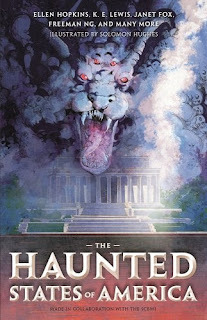
April 28, 2024
Roots and Limitations
by Charlotte Bennardo
The theme this month is 'rooted'. For over a week, I've been 'rooted' in my bedroom/en suite because of a right hip replacement. My world was limited to how far I could use my walker between bedroom, bathroom, and my office (all on the same floor). The same path, trod over and over, was my world.
 Photo by Felix Mittermeier: https://www.pexels.com/photo/green-tr...
Photo by Felix Mittermeier: https://www.pexels.com/photo/green-tr...Now in week two, I can slowly, carefully, negotiate stairs. I took a walk on the driveway and into my backyard. My world has expanded; I'm no longer rooted in the same, small, circular path.
And writing is like that. We are rooted in our beliefs, our style, our interests. We must continually expand our narrow paths by including diverse characters, new insights, and updated information. What was true in Mark Twain's time when he wrote Huckleberry Finn is no longer true today: using slang terms for people of color is unacceptable, as well as the racism, although it was acceptable in its time. The presence of the language has kept the book on the banned list for decades. What was true for Jules Verne's From the Earth to the Moon written in 1874- a moon landing by shooting people in a giant cannon- would be met with laughter now. In comparison, The Martian by Andy Weir, which is about an astronaut stranded on Mars, incorporates modern technologies, although it does take some fictional liberties (there are no windstorms on Mars capable of what caused astronaut Mark Watney's situation). There had to be extensive research, something Verne couldn't do.
Likewise, our styles have to change. Now, an author can't simply sit in a cold garret room and write in the same manner over their career--they need to move with times, conditions, social norms, and for their own growth. I have worked on being able to write in different points of view, sharpened my dialogue, tried to either streamline or add background, backstory, and inner voice (interiority) as dictated by the needs of the manuscript and to appeal to both readers and editors/agents.
 Photo by Matthew Montrone: https://www.pexels.com/photo/green-pi...
Photo by Matthew Montrone: https://www.pexels.com/photo/green-pi...So instead of being stubbornly steadfast--rooted--in one spot, we should, and must, as career writers, step out and explore and utilize new methods, styles, insights, research, and approaches.
Short post this month, but I need to stretch the legs then explore and utilize a nap. See you next month.
Charlotte writes MG, YA, NA, and adult novels in sci fi, fantasy, contemporary, and paranormal genres. She is the author of the award-winning middle grade Evolution Revolution trilogy, Simple Machines, Simple Plans, and Simple Lessons. She co-authored the YA novels Blonde OPS, Sirenz, and Sirenz Back in Fashion. She has two short stories in the Beware the Little White Rabbit (Alice through the Wormhole) and Scare Me to Sleep (Faces in the Wood) anthologies. Having finished her MFA, she's applying what she learned and is working on several children's and adult novels, along with some short stories. She lives in NJ with her family and her floofy cat. When they trimmed the backyard tree, the crazy squirrel couple had to move out, but she is happy to report she has a new squirrel tenant.
April 23, 2024
Dramatizing the Interior Life: Smack Dab in the Imagination by Dia Calhoun
Stephanie Burt writes in The Poem Is You: 60 Contemporary Poems and How to Read Them (Harvard University Press, 2016), “[A task] still best fitted to poetry” [is to] let us imagine someone else’s interior life.” [Poems] “project a voice and embody a compelling or attractive individual consciousness, which we can then hear, or speak, or sing, or try on, or try out, as if it were our own.”
As someone who writes both poetry and fiction, and often a blend of both in verse novels, I have a strong reaction to this quote. Perhaps imagining another's interior life is a task best fitted to poetry but showing that interior life through action in the world is a task best suited to fiction. Either way, however, whether a writer begins with the interior life of a character ("individual consciousness") or with how the character acts in the world, the writer's imagination is needed to move from the one to the other. Some of us are more skilled with one, some with the other. Sometimes when I'm stalled, switching from interiority to the external action works to shake up my imagination or vice versa. Try this as an exercise to flex your imagination.
April 22, 2024
Interview with Aaron Arsenault, Author of The Climate Diaries

Welcome to Smack Dab, Aaron! I have to admit, the tag for your book (“Inspire kids to protect the planet with “climate-fighters” superhero series “) snagged my attention immediately. Please tell us a bit more about The Climate Diaries.
Thanks!
As a climate-tech industry guy and a concerned father, I set out to do something about it. As a first-time author, however, I’m a little new to book publicity! With this series, I set out to tackle the social, scientific, and existential discussion surrounding climate change head-on, in a way that kids could relate to, that will leave them both entertained, and eager to learn more.
The first of an intended series, “The Climate Diaries- The Acade my" (Borrowed Planet Press), is a 52,000-word/300-page middle-grade novel (ages 9-12 yrs.) that weaves over 30 illustrations with some of the high jinks kids love, an element of mystery, and lots of adventure.
You’re not a stranger to climate issues–in fact, you spent 15 years working in climate tech. What kind of projects did you work on? What did you see about the climate that concerned you, or drove you to want to speak out about the issue?
I’ve worked for some of the largest companies in the space. I developed EV charging infrastructure for Tesla, GM and Volvo, put great big honking Tesla battery packs into the front yards of large facilities (for back-up power), and worked with national retailers, grocery chains and real estate companies on all sorts of big corporate clean energy initiatives over the years.
In my day job, I learned early on about the importance of storytelling. We weren’t just selling climate-tech products, we were selling a “movement”. Of course, I encountered a lot of naysayers, (especially early on), so my story telling skills had to get a lot better- fast!
Then, kids came along… (they are 11 and 14 now!). Suddenly, storytelling at home became even more important as I tried to frame what was going on in the world for my gang. Trying to find something positive and inspiring proved a huge challenge. What little there was about the climate crisis was written for YA audiences and tended to be very dystopian. Other than that, there were the usual fart and wizard books and not much else! So, I set out to write something better!
What made you want to take the leap into fiction? Why young readers specifically?
I chose fiction because it engages kids’ imaginations and attention. ‘Climate anxiety’ is a growing phenomenon among young people, and I needed to find the right format, characters and setting to convey that message in a way that would entertain kids but also tap into their curiosity.
Statistics cite as many as 37% of kids exhibit symptoms consistent with an anxiety disorder by the time they hit their teens due to climate fears. I felt something had to be done with kids of MG age… to intervene and reset- before fear takes hold.
My hope is that this series will offer young readers an anchor to move beyond their anxiety and into the reshaping of more empowering belief systems as they embark on their own life journeys and begin asking questions about climate change. Kids have to believe that this is a problem we can, are and will continue to fix, because we’ll need them to pick up the baton – soon.
Most of all, I hope it leaves them feeling inspired to fight for a better future! As a writer, you can’t ask for a much better reward than that.
The writing process is always a learning process—no matter how many books you’ve already published. What did you learn about writing? About yourself?
OMG! So much! I joke with people that this took one more year to complete than my degree! It’ll be five years in the making by the time it hits the airwaves. It was a long grind. My writerly hygiene was poor because I had to fit it in with work, parenthood and the ‘covid lifestyle’… I’ve always known I was a half decent writer, but what remained to be seen was whether or not I could write fiction. I generally read non-fiction myself and so it was anyone’s guess. I guess we’ll see what readers think and let them be the judge!
The biggest lesson I’ve learned as a writer is to not let perfect be the enemy of good. That’s what editors are for!  In my next book I’ll be sure to remember that more! I’ve also learned that if you want to be a novelist you have to really, really care about the characters you create and the situations you put them in. You have to be invested in every scene. Otherwise it just falls flat.
In my next book I’ll be sure to remember that more! I’ve also learned that if you want to be a novelist you have to really, really care about the characters you create and the situations you put them in. You have to be invested in every scene. Otherwise it just falls flat.
I spent a lot of time doing character studies early on. Backstory stuff that may never land in the books. After spending five years with these four kids I now feel like their dad. It’s been a humbling, lonely, and at times excruciating experience becoming a novelist. But the flurries of creativity when the writing flows and the book writes itself offer one of the best dopamine rushes ever!
So much of MG hinges on character. I love the description of Jax on page 1–how he focuses on the way Mr. Clifford scrunches his hair into a mohawk and how Jax “relishes” frustrating him. Right from the start, Jax is something of a rascal. How does his personality help to further or drive the plot?
Thanks! Creating Jax probably composes lots of bits from my own childhood, (although I’m no genius)! I did however grow up with a passion for nature and the outdoors. As the son of a fisherman, that’s in my blood too. His personality gets him into trouble more often than not, and when he takes it too far he’s almost sent to kid-jail (juvenile detention!). A chance intervention from agents at the Climate Action Taskforce saves his bacon just in the nick of time and he’s given an opportunity to serve his planet. That said, its not long before Jax’s fierce competitive edge and mischievous ways get him back into hot water!
What does Jax come to learn about climate as the book progresses? How does he change himself?
Jax is an ‘expert’ on all things climate right out of the gate. He doesn’t so much learn things about climate as teach the rest of us a thing or two… What he does learn in spades by the end of the book is humility; something that has illuded him up to this point in life.
What was the most surprising aspect of the publishing process? We have both MG readers and writers who follow Smack Dab–what advice would you give aspiring authors?
I considered approaching agents and traditional publishers, but I didn’t want to draw the process out any longer. It had taken me almost four years of writing to get it to a stage where I thought the story and characters were strong. Getting an agent and shopping a manuscript around can take several years more, and of course the chance of landing a deal is small. So- I opted to self publish.
As an indie, I’m still figuring it all out myself, but the hardest part as an indie is striking a balance between following the rules i.e.: wanting to make the best, most professional looking book possible with moving quickly, and making an affordable investment as a first timer when you have no idea if you’ll even sell a single copy. First time indie writers have to be prepared to dig into their pockets, a lot. Especially for MG and kids. The market is for physical books. So they have to look and feel good. Like ‘real’ books. I’ve learned there’s more to it than hiring a guy on fiverr and grabbing a stock photo for the cover. That may work fine for adult e-reader crowds, but parents want to give their kids an experience. The book has to look the part.
When I learned that all authors still need to be ‘authorpreneur’ regardless of their path to market, that just reinforced my decision to go indie- at least for now. In the end, I started my own imprint (Borrowed Planet Press) and hired with a reputable publisher (who also publishes traditionally) to bring the project to life. If sales on this first book are strong, I may take my proof of concept and shop around some more as I consider how to bring book 2 and the rest of this series to market.
I used some freelance resources for the illustrations and editing. I was lucky to finally meet an amazing illustrator in Adrienn who could bring my vison to life. It took me almost two years to find someone who’s style I loved that I could click with creatively. That relationship is pure gold to me- I owe her so much gratitude. As an artist myself, I knew what style I was after (and mine wasn’t it!). Although we’ve never met in person, we’ve managed to sync the illustrations and story in a way that really works well IMO. I realize most MG novels (graphic novels excepted of course) don’t have illustrations in them anymore. I grew up on Roald Dahl books. It’s hard to imagine what they would have been like without Quentin Blake’s incredible imagination. If I ever wrote for MG, it would simply have to be illustrated! I hope it inspires more authors do it. It costs quite a bit more to produce, but it takes the reader experience to the next level. Especially for kids who may me be challenged with their reading development. As an ADHD kid I certainly was, and illustrations were what kept me turning the page!
The beauty of the indie experience is that no two paths have to be alike. For those who are die-hard DIY’ers you could theoretically do every single aspect of the process yourself, (but I wouldn’t recommend it!). But I think it’s good to have subject matter experts, editors, illustrators, web designers, publicists and anyone else integral to your effort on speed dial. Going it alone makes it that much harder and the end product suffers. Each time I was faced with a fork in the road, I almost always brought in external resources. For the most part, it’s worked out great.
One thing I’ve learned above all else- no one will love your baby like you do! So don’t be surprised if you’re up at 3am looking for missing end quotes on your 24th draft yourself. It comes with the territory!
What’s the most important takeaway you hope to impart on your readers?
That the climate crisis IS solvable. That it’s not too late for kids of all different backgrounds to form empowering beliefs about the positive impact they can have on climate change- and act on them to produce amazing results! And that one day the Earth will belong to their kids. It’s time we get it right.
The Climate Diaries is a series. What will the next installment bring?
Yes it is! Book one ends on quite a cliffhanger. It kind of happened by accident. Originally book one was about 85,000 words. It was just too long… I wasn’t going to the late series Harry Potter length so I cut it almost in half. Luckily, I was able to chop it in just the right spot and doing so also gave me a nice head start on book two! It was a nice bonus!
Book two will find the kids in a very different setting. After riding out a Category 7 hurricane, their survival skills will be put to the test and we will get to see the depth of their grit. We’ll also learn a lot about oceanic pollution, and reveal a bit more about the mystery surrounding Powell Aitkins (the missing climatologist).
But I shouldn’t give away too much! You’ll have to see for yourselves 
Where can we find you?
I live in Oakville, Ontario, Canada. It’s a nice place to live on the shores of Lake Ontario, about a half an hour’s drive west of Toronto. 🙂
Instagram: @aaron_arsenault_
Website: www.aaronarsenault.com
April 15, 2024
An Emotional Deep Dive!

Fiction is primarily an emotional exchange. The reader staysconnected to the hero because they feel the story. The reader wants tosee the character succeed, or at least wants to see what happens next, becauseof this connection.
The debate whether a story is character-driven orplot-driven is outdated, even cursory. The truth is characters drive the plot,and the plot molds the character. The relationship is intimate andinseparable. And at the core of thisconnection is the heart – the emotion -- of the story.
Remember how you felt when you read Wilson Rawls’ Where theRed Fern Grows, or the tear-worthy Marly and Me, by John Grogan? Did you gaspwhen you read Daniel Keyes’ Flowers for Algernon? Or Alice Walker’s The ColorPurple? Eegads, I still cry at the very thought of Fred Gibson’s Old Yeller!
Did you cheer (as I did) when Harry Potter finally, finallybeats Voldemort?
I could go on, but you get my point.
These reactions -- and the ensuing thematic expressions thatultimately define a classic with literary stay power – are courtesy of theemotional connection between story and reader.
But how does one show emotion while telling a story? Bydefinition, nonverbal emotion can’t be told. It must be shown. So say writingcoaches and authors Angela Ackerman and Becca Puglisi of Writers HelpingWriters.
The fine art of dramatizing emotionally complex charactersis a struggle for many writers at every stage of their career. What has helpedme is Ackerman and Puglisi’s The Emotion Thesaurus: A Writer’s Guide toCharacter Expression. This is the second expanded edition, and so much better than the first! Considered “the gold standard”, theultimate show-don’t-tell guide for emotion, I've found the entire series indispensable in my writing and as teaching aids in my MFA classes.
Key points include:
· Telling creates distance between readers and thecharacter.
· But showing takes more work than telling.
· Cliches are vilified for good reason: they’re asymptom of lazy writing, a result of settling on an easy phrase becausecreating something new is hard.
· Word choice is important in expressing emotion,but it only goes so far.
This thesaurus, and others included in the series, takes oneach of these points to illustrate what writers can do before draftingto make sure a character’s emotions are consistent and realistic. The book includes instructions -- an actual demonstration on how to employemotion! – to reveal hidden feelings and emotional subtext.
Check out their other resources on of my favorite blogs,Writer’s Helping Writers. Each entry is a deep dive into variousliterary devices. It’s like taking an MFA course!
What books made you cry?
Thank you for reading!
-- Bobbi Miller
April 12, 2024
Ancient Roots by Darlene Beck Jacobson
With this month's theme of rooted, I can't help but think of trees. Especially the ancient ones that have survived for thousands of years. I am currently reading a fascinating book that describes some of these natural wonders found in the USA.
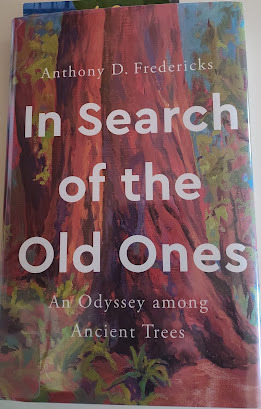
IN SEARCH OF THE OLD ONES talks about the redwoods, the sequoias, bald cypress, and the quaking aspen trees that have been here since indigenous people roamed the continent. Trees that have survived earthquakes, floods, fires, tornadoes, and other disasters both natural and man-made.
The quaking aspen in Fish Lake, Utah is a single tree that spans 106 acres - the equivalent of 60 pro soccer fields - and has been alive for 8-12,000 years. It was around before the invention of the wheel. Before clay pots were developed. Before the birth of Christ. It is the largest living organism on earth.
What may look like a forest of aspen trees to anyone who observes them, is really a forest of vertical roots from the main tree. One tree...rooted in the ground atop a mountain nearly two miles above sea level. Talk about survival!
The second largest living organism on earth also happens to be a tree. In Sequoia National Park in California, the General Sherman weighs in at 1,385 tons - the equivalent weight of 213 African Elephants. At a height of 274.9 feet, it towers over the other trees surrounding it, all giants of their own. It sprouted about the same time Julius Caesar was born and is estimated to be between 2,100 and 2,200 years old.
For more about this amazing specimen of longevity and survival visit:
https://www.bing.com/search?form=MOZL...
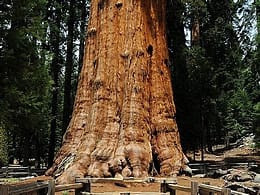 Why am I sharing these facts about ancient trees? First of all because they are amazing!! For organisms to live that long despite all the things that have come and gone in the centuries of their existence, they have stayed rooted. Not only standing still, but spreading their roots far and wide. Reaching up. Reaching out. What amazing stories they hold beneath their trunks! Stories of persistence. Stories of perseverance. Stories of triumph over adversity.
Why am I sharing these facts about ancient trees? First of all because they are amazing!! For organisms to live that long despite all the things that have come and gone in the centuries of their existence, they have stayed rooted. Not only standing still, but spreading their roots far and wide. Reaching up. Reaching out. What amazing stories they hold beneath their trunks! Stories of persistence. Stories of perseverance. Stories of triumph over adversity. The same traits of characters that resonate in the stories we write.
Being rooted in one place does not mean being stagnant. It does not mean we no longer grow or change. It means we have a solid foundation to tap into. To spread out from. To taste and touch the world around us in search of what lies within our surroundings and beyond. We can learn a lot from these ancient ones.
Darlene Beck Jacobson has always had a love for trees and saw an aspen up close. Her next adventure is to visit the redwood forest to see the ancient trees rooted there.
April 11, 2024
Rooted in Root Beer
 The family story goes something like this.
The family story goes something like this. In an attempt to save money and to feed their love for root beer, my grandparents, one spring, took a stab at making their own. They did whatever one does to brew it, then they stored all the bottles in the cool basement.
The thing about cool basements, especially in un-air-conditioned Midwest homes, is that they are not immune from summer heat.
You can guess the rest.
There came the day when my grandparents heard a huge pop. Then another. Another!
In the heat, the carbonation took on a life of its own. The bubbles became too much for the bottles to contain, and the remaining batch of root beer—and all that glass—exploded throughout the basement.
To you, this story may seem to have little connection with books or writing. But to me, it has everything to do with perspective, point-of-view, voice, and more.
I was fortunate to grow up rooted within a larger extended family that provided a lifetime of stories. I don’t use these stories as is (I tried and failed once), but the personalities and the experiences and even the banter continue to supply a vital undercurrent.
In other words, while family may not be at forefront of my books, it’s always there, hidden away in the basement, ready to explode into a scene when I (or my characters) need it.
Award-winning author Jody Feldman has been told that she’s really skilled at keeping the parents from controlling her characters’ stories. But the truth is, they are there as an influence, for better or for worse. (And with fiction, worse is often much more fun.)
April 8, 2024
ECLIPSE by Jane Kelley
Today I'm chasing the total eclipse of the sun.
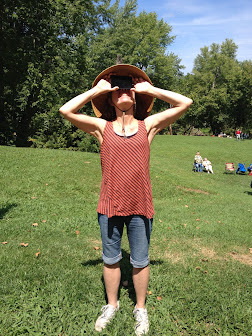
This photo of me staring at the sun through my welder's glass was taken at the 2017 eclipse. I also saw the one in 1991. But I'm not saying, okay been there, done that. Instead, my family has been planning for months to see this one on April 8. We want the best chance for clear skies in that narrow strip of the zone of totality.
Why have we spent so much time and effort and money? The sun and the moon hang around us all the time. We take them for granted like old friends. But today those heavenly bodies will align in an unusual way AND ATTENTION MUST BE PAID.
Some folks are a little annoyed by the hype and the hoopla. Some worry that they might miss out and someone else will have a better eclipse experience. Better scenery. A cleverer cocktail. More music.
I am worried about those clouds that have been hanging around me for months. But mainly I'm thinking of the poetry of this moment. The meaning of the event.
Isn't amazing that it happens at all?
That the moon's size is perfect for passing us at the perfect distance to totally block the sun.
That the new moon sneaks across the sky hidden from us because we can never see its dark side. And then it accomplishes the unthinkable and turns day into night. No wonder past eclipses toppled regimes!
And what does the sun do when it's upstaged by this small ball of rock who can't even produce its own light? Does the sun sulk and say, Fine, enjoy the darkness. No, it says, I'll reveal another secret.
THE CORONA. White wisps of fire clouds. Strands of plasma which are always billowing out from the sun. When you see the literal crown, you can't help but be amazed by the energy that pulses from this glowing orb.
There might be clouds today. But even if there are and I can't see anything, I will still take a moment to think about the connection between the Sun, the Earth's Moon, and a human named Jane standing on Earth and marveling that we are all here in this universe.
I have no pictures of the eclipse. That's way beyond my skill set. Instead, here's my husband Lee with an eclipse of his own.
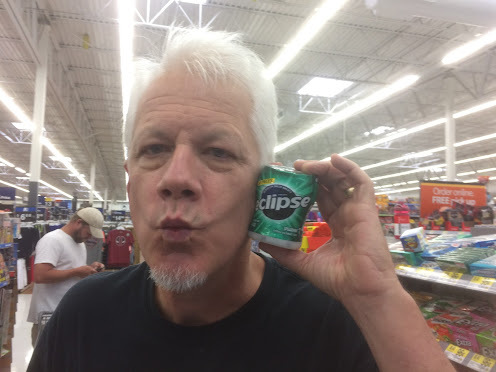
JANE KELLEY is an eclipse chaser who also writes middle grade novels.



